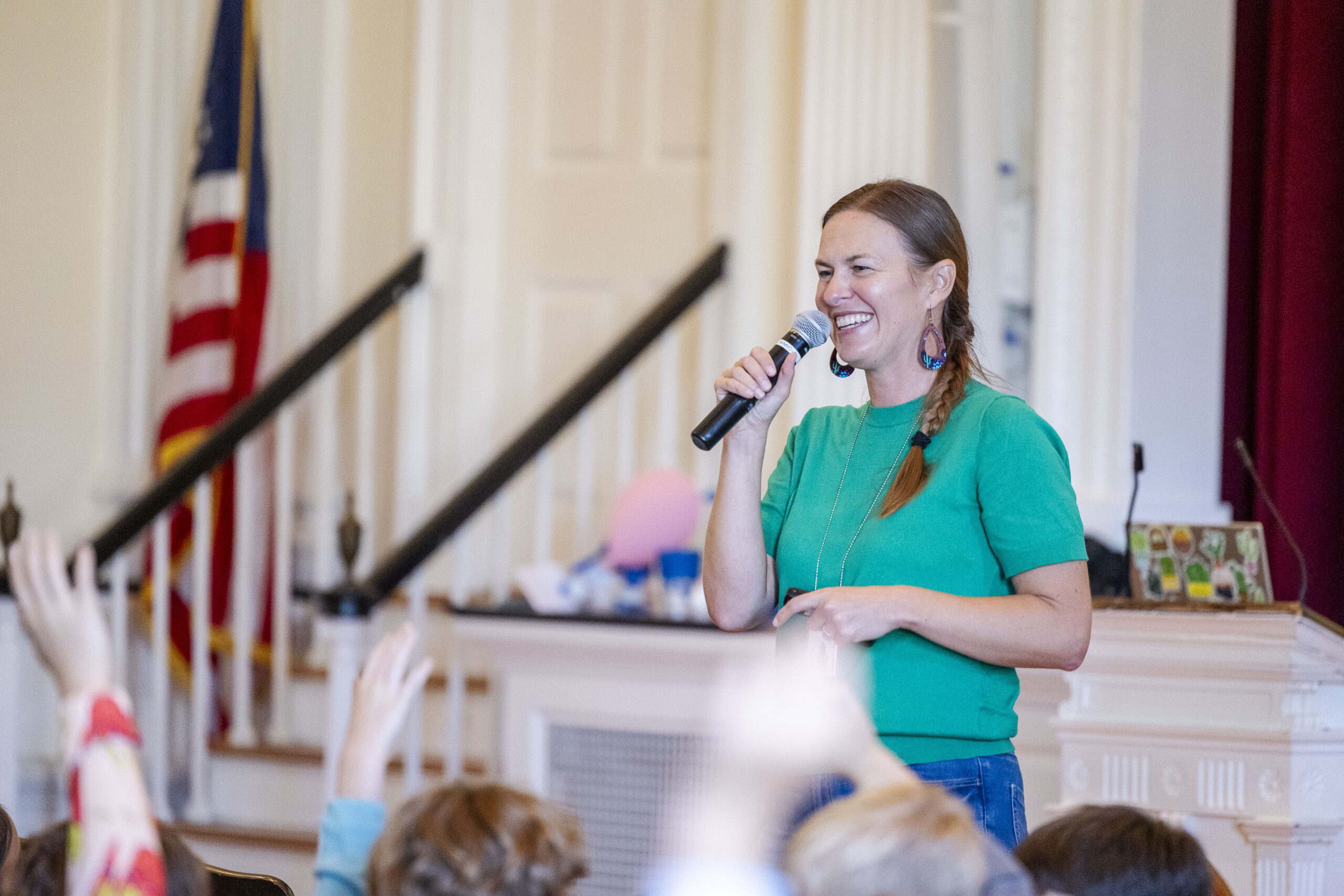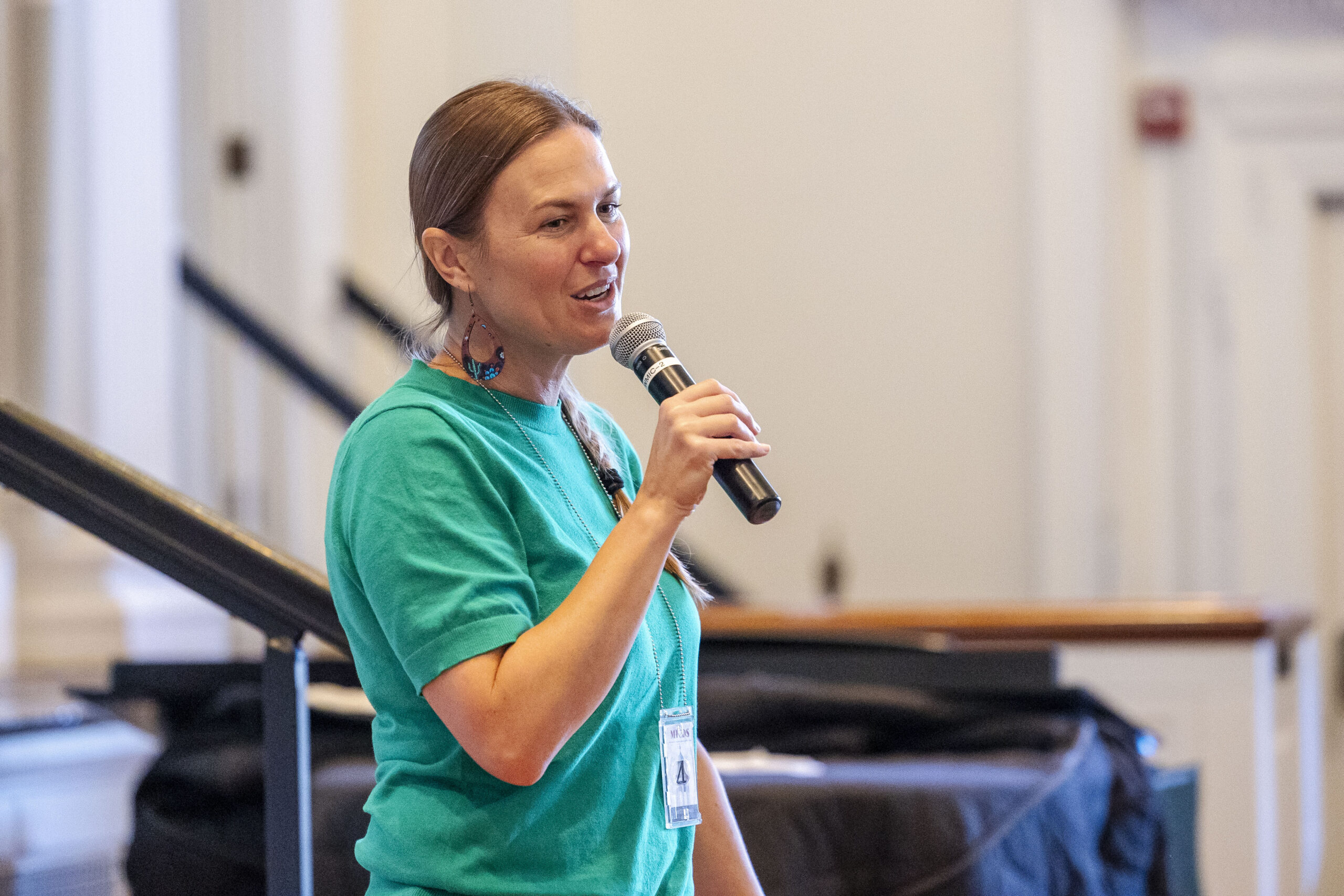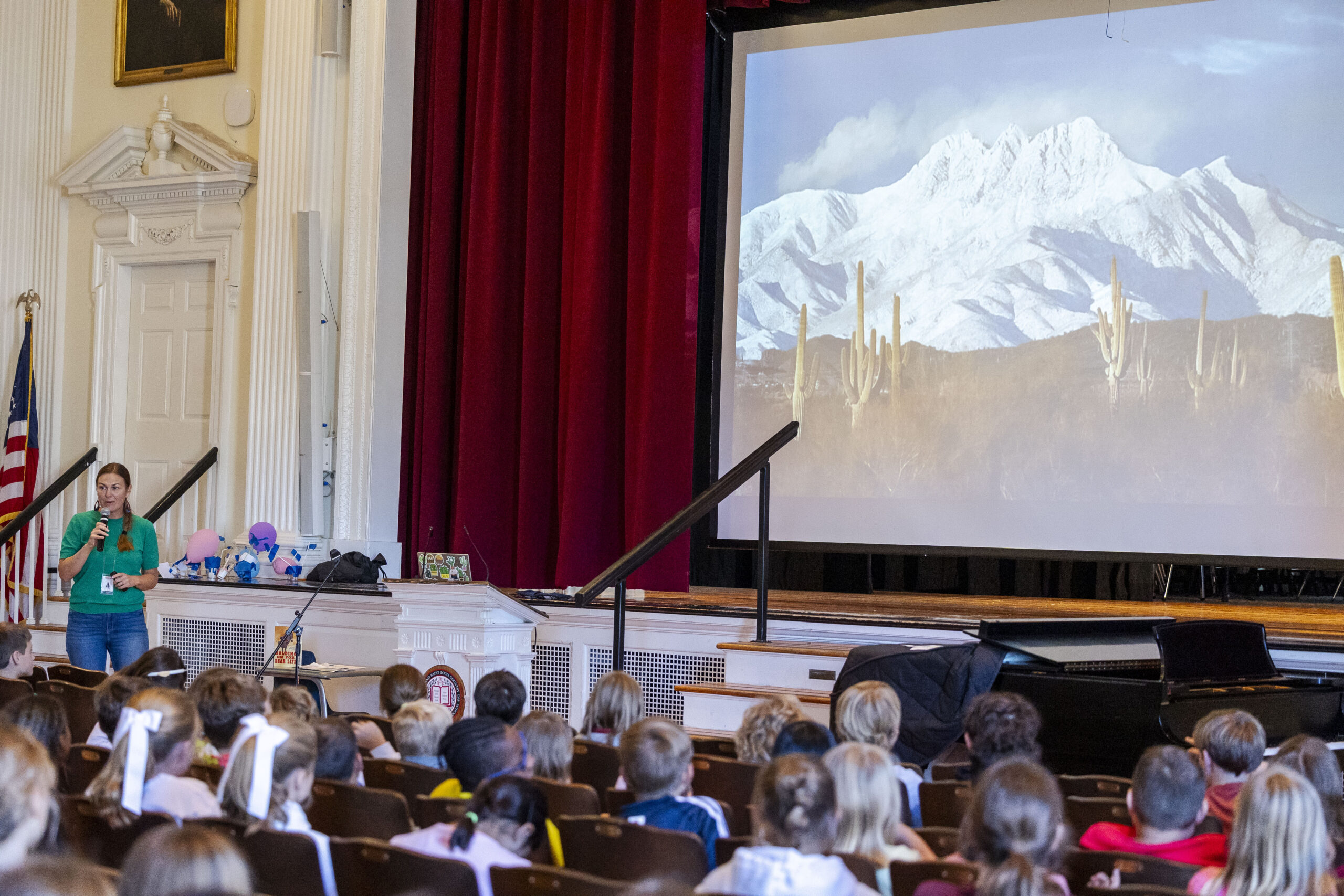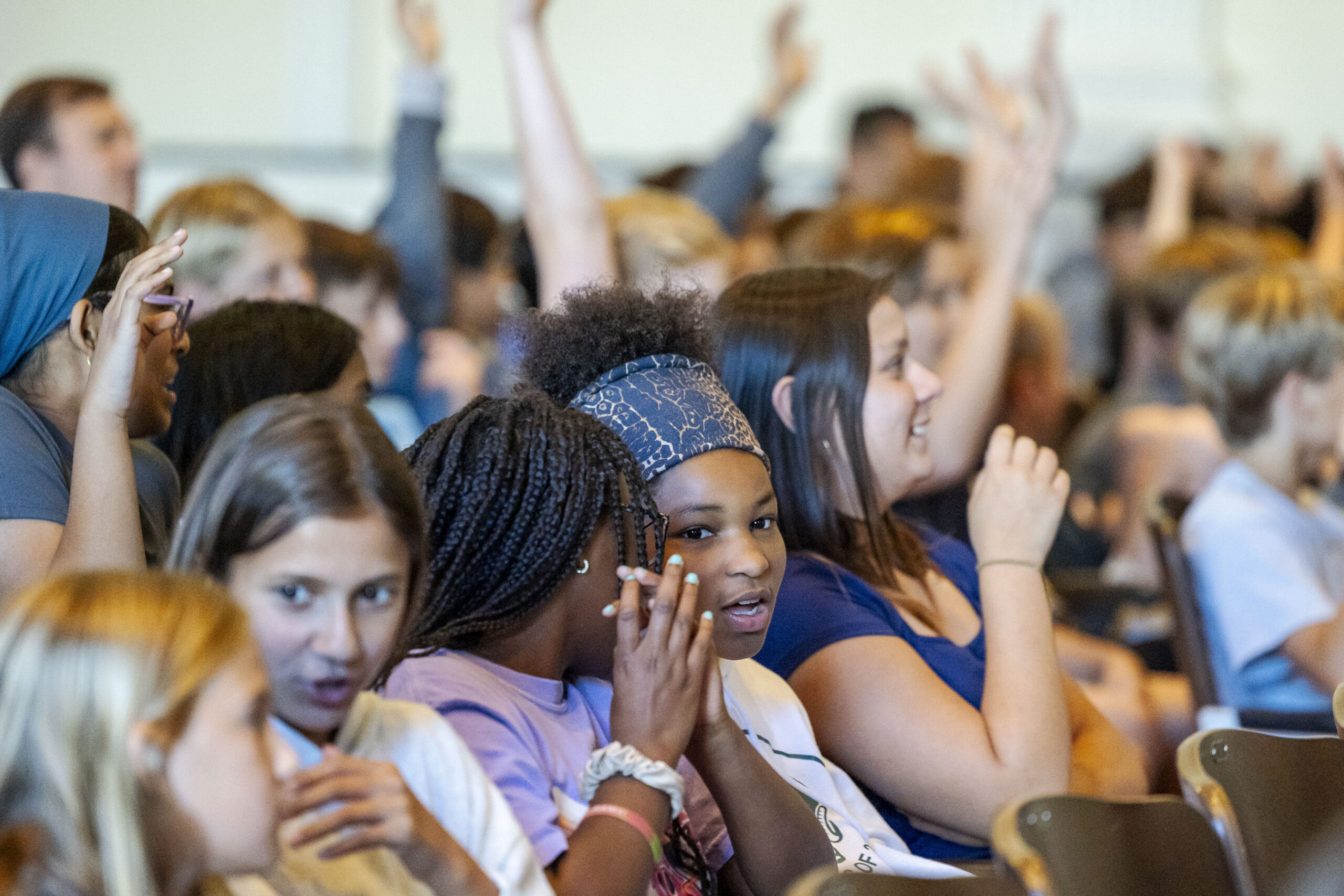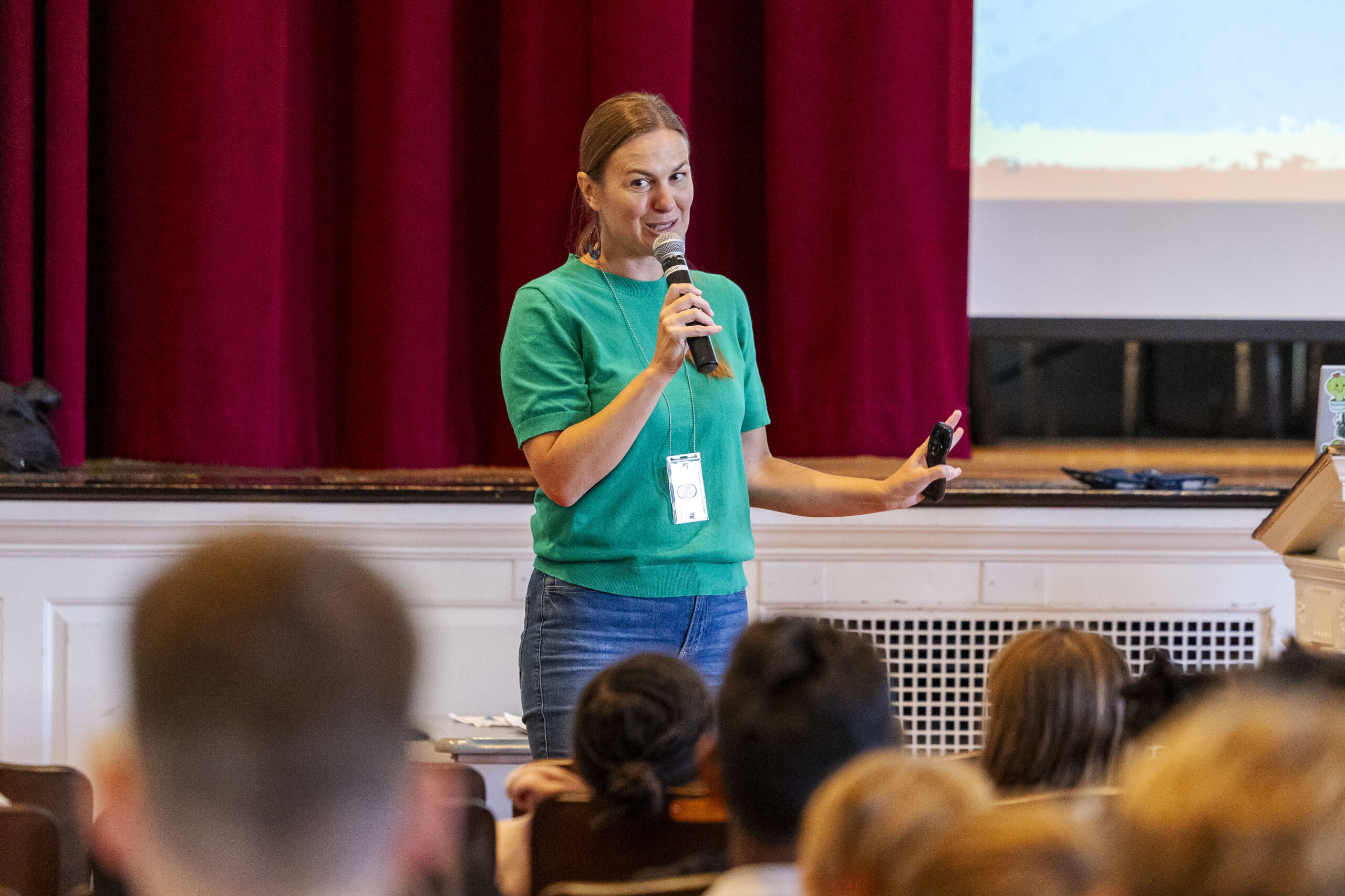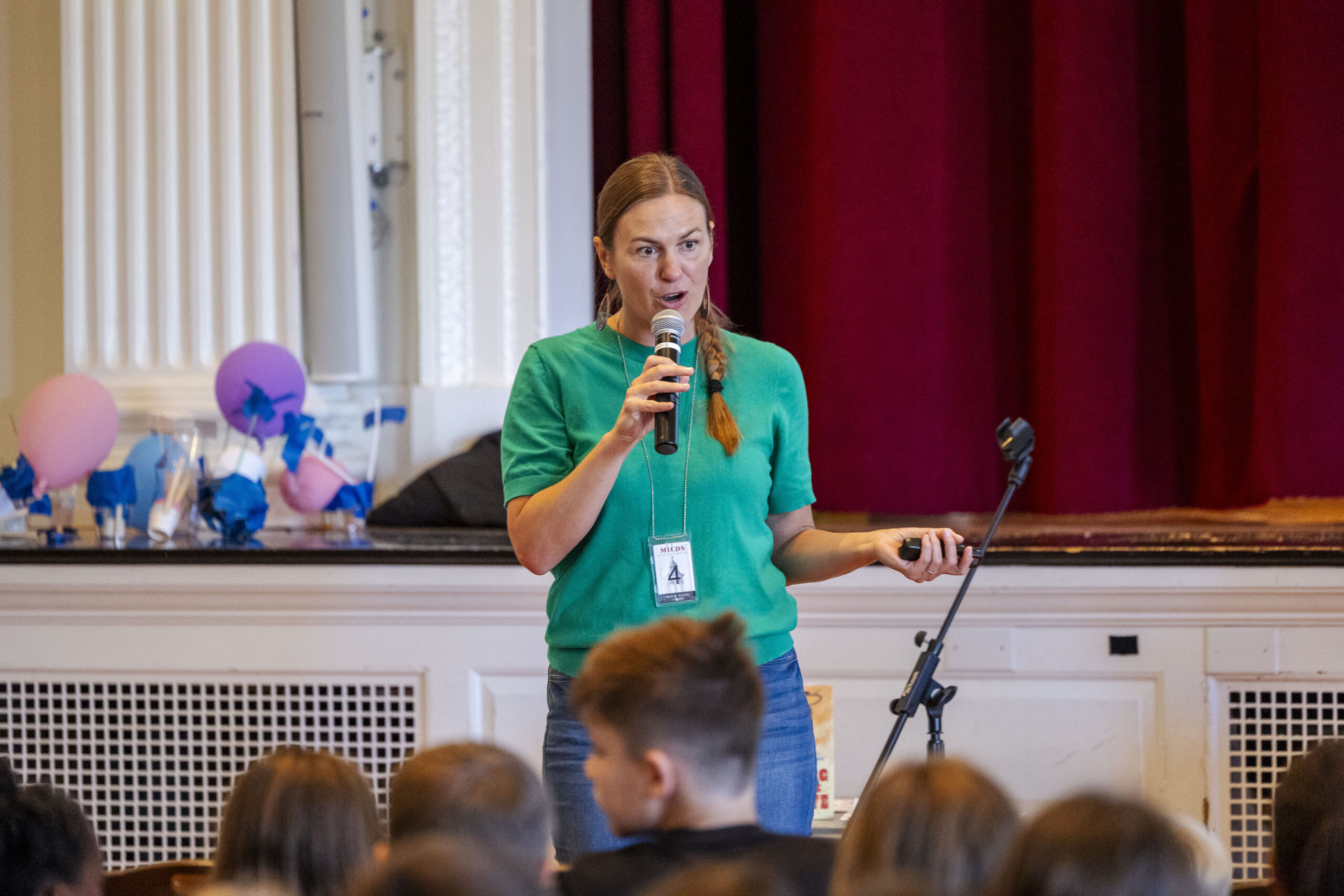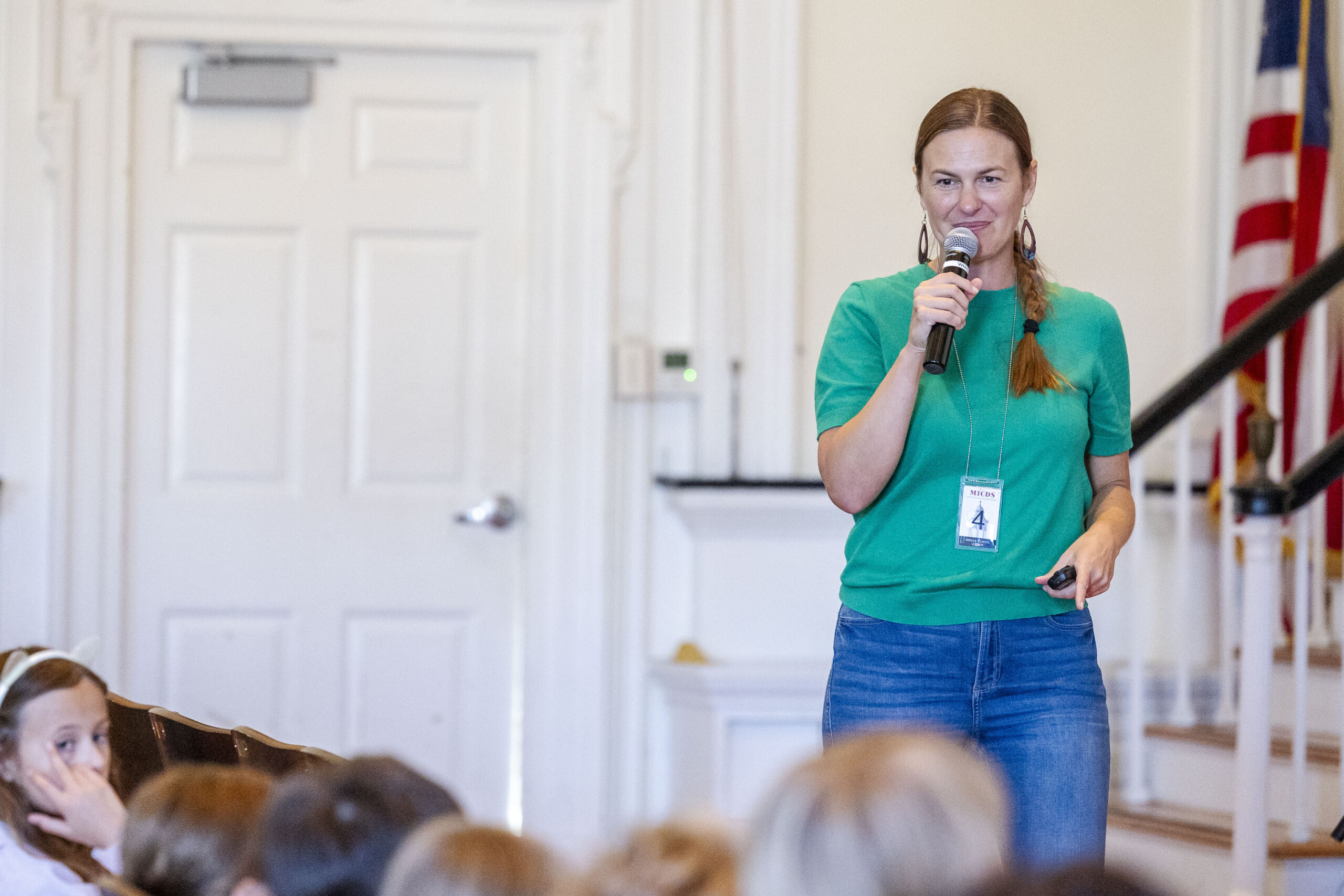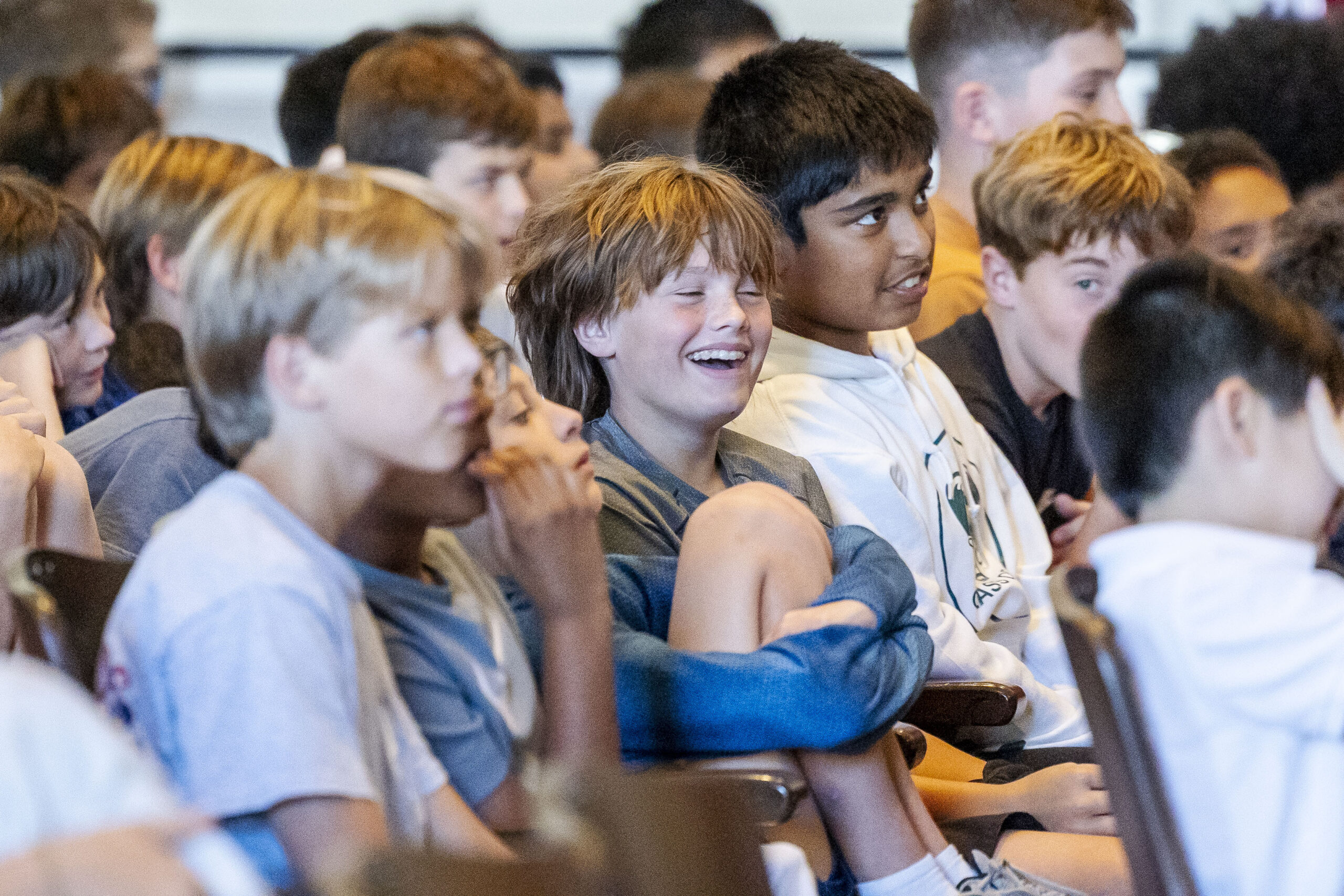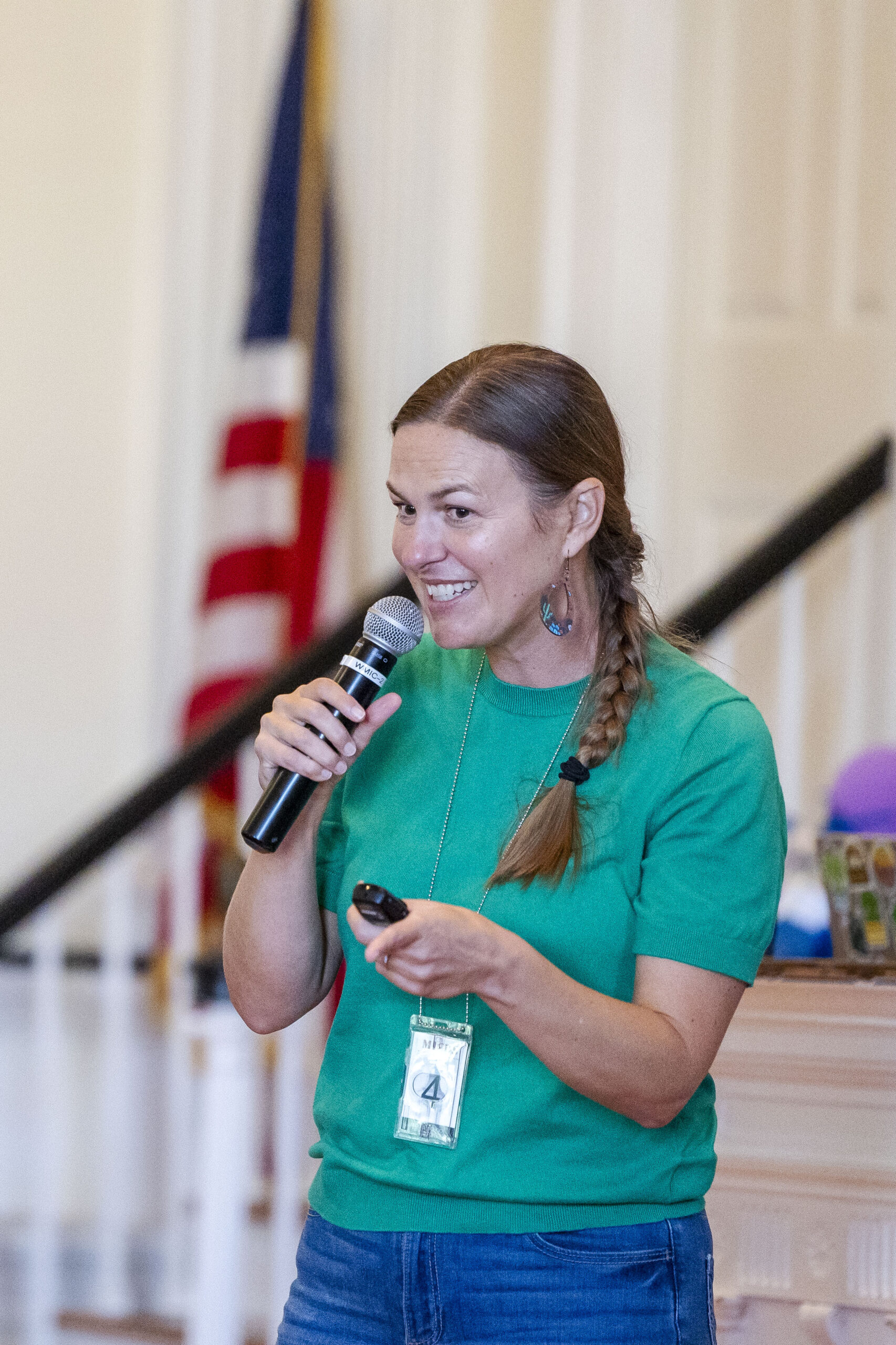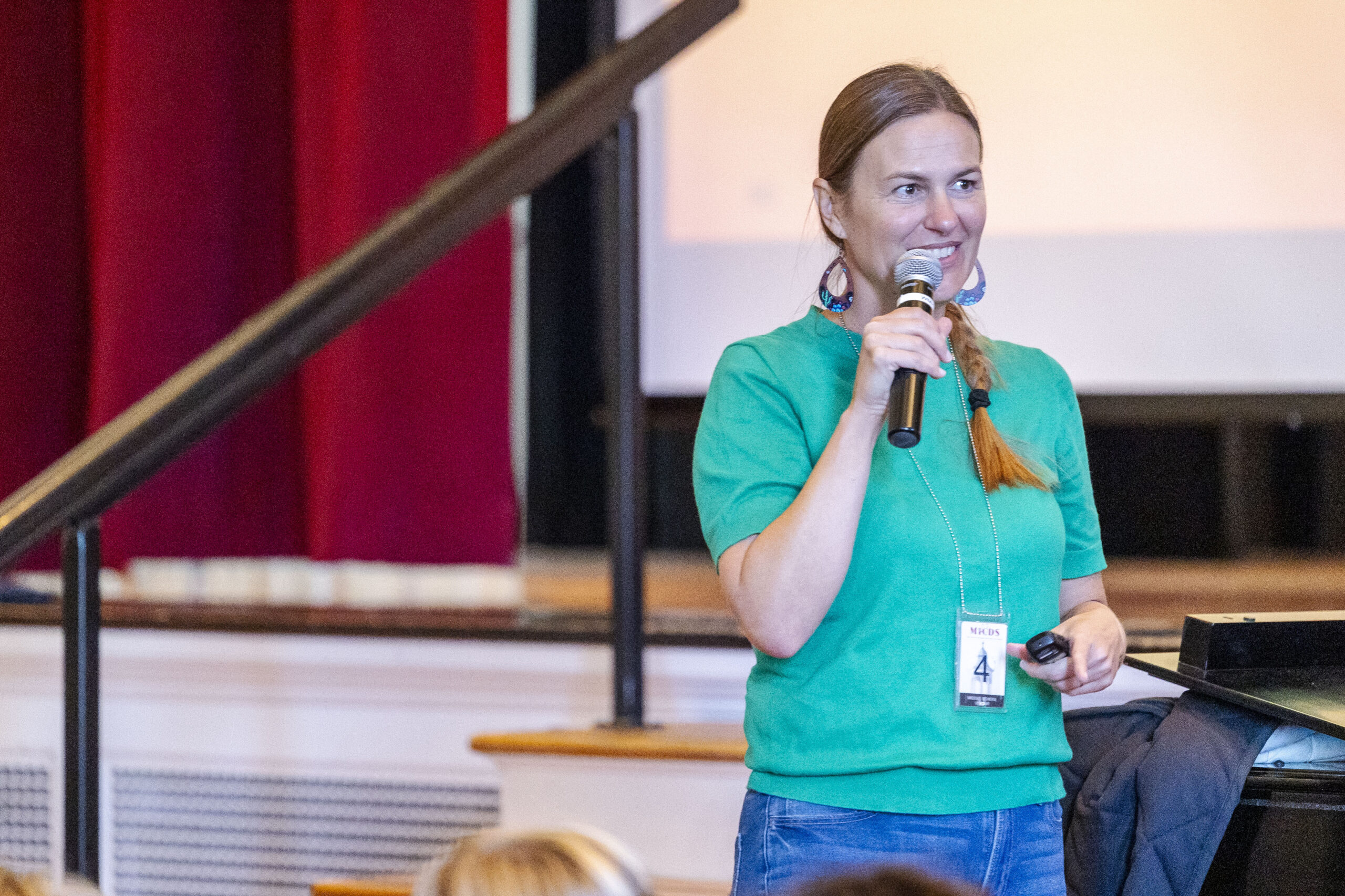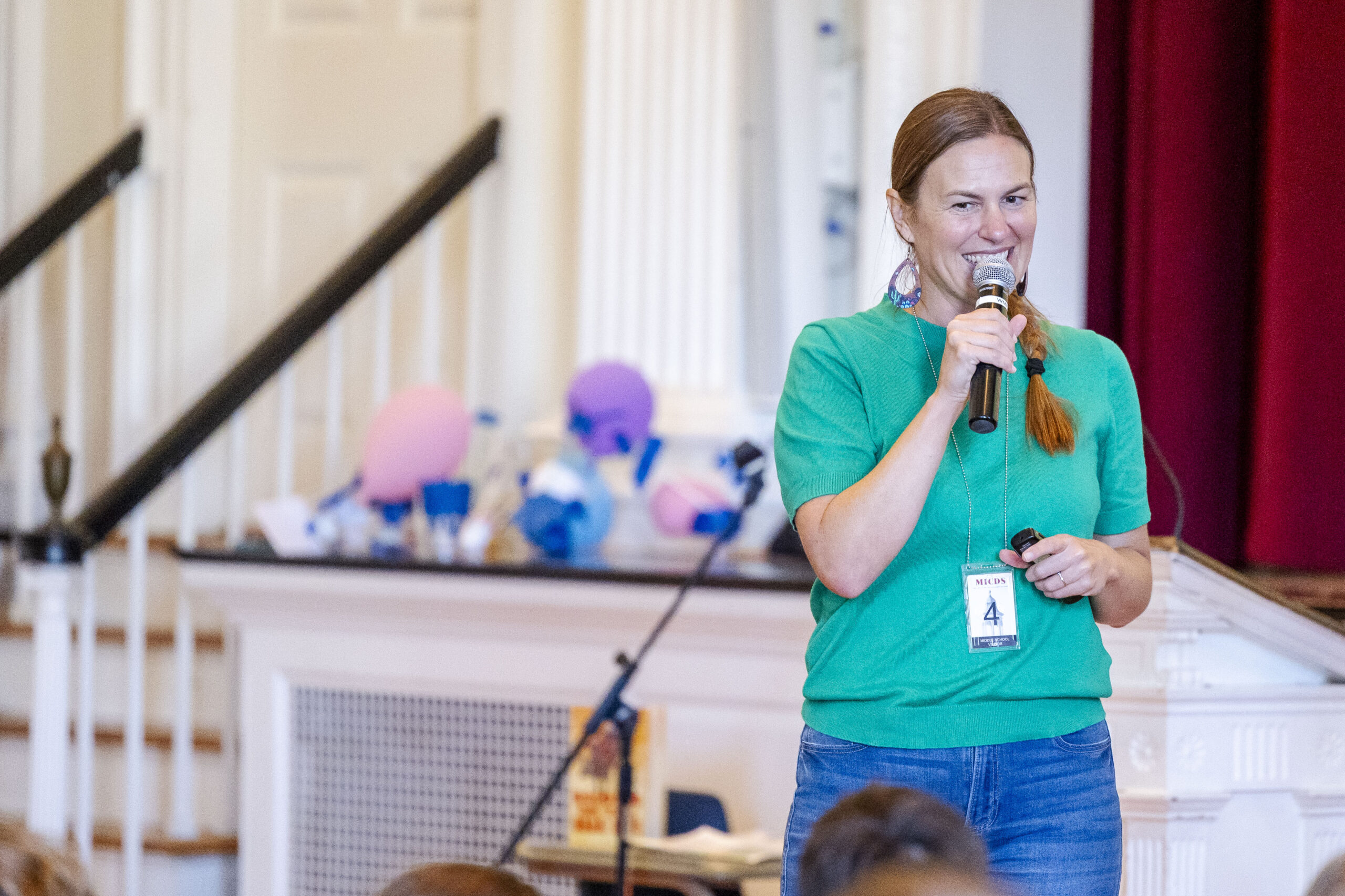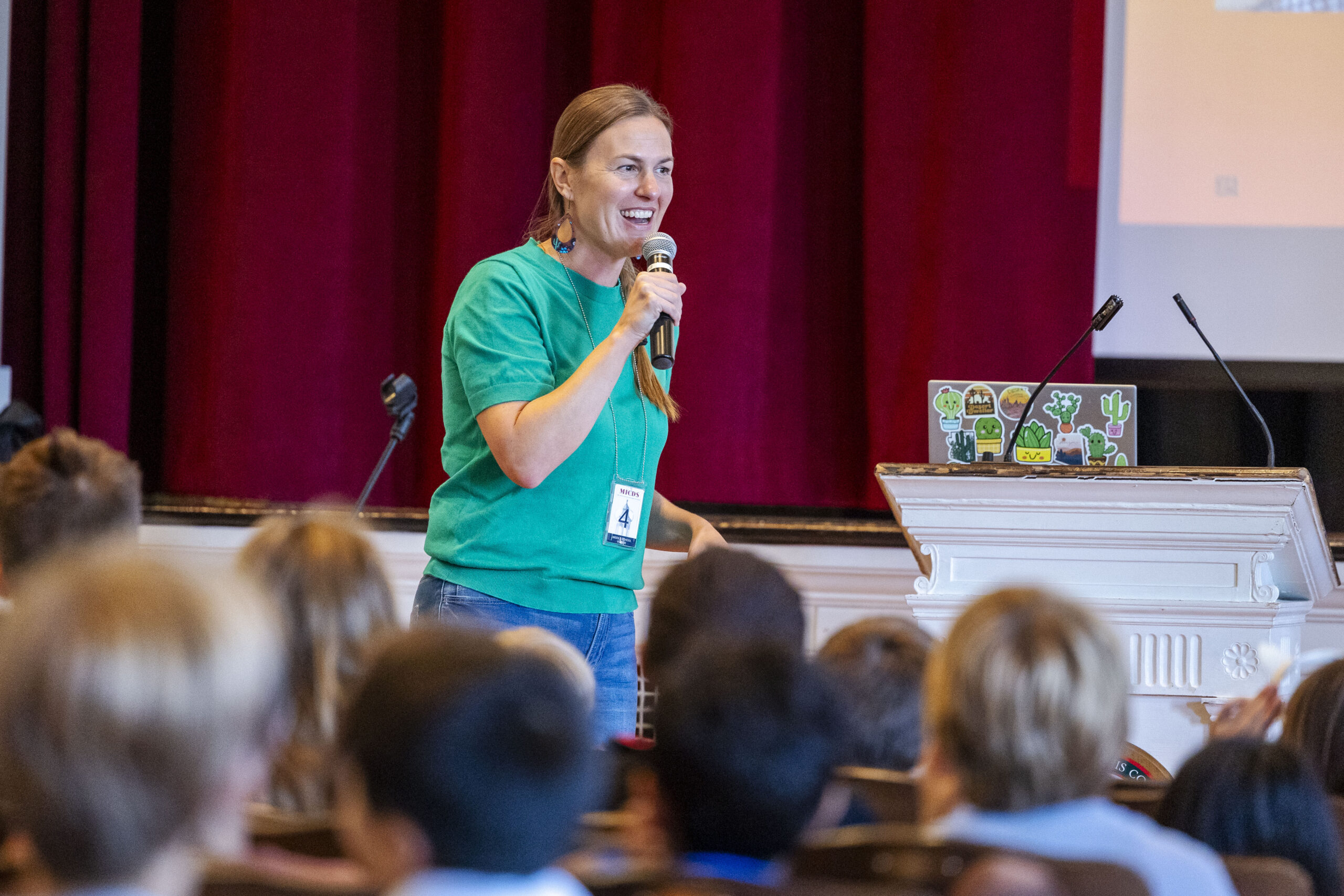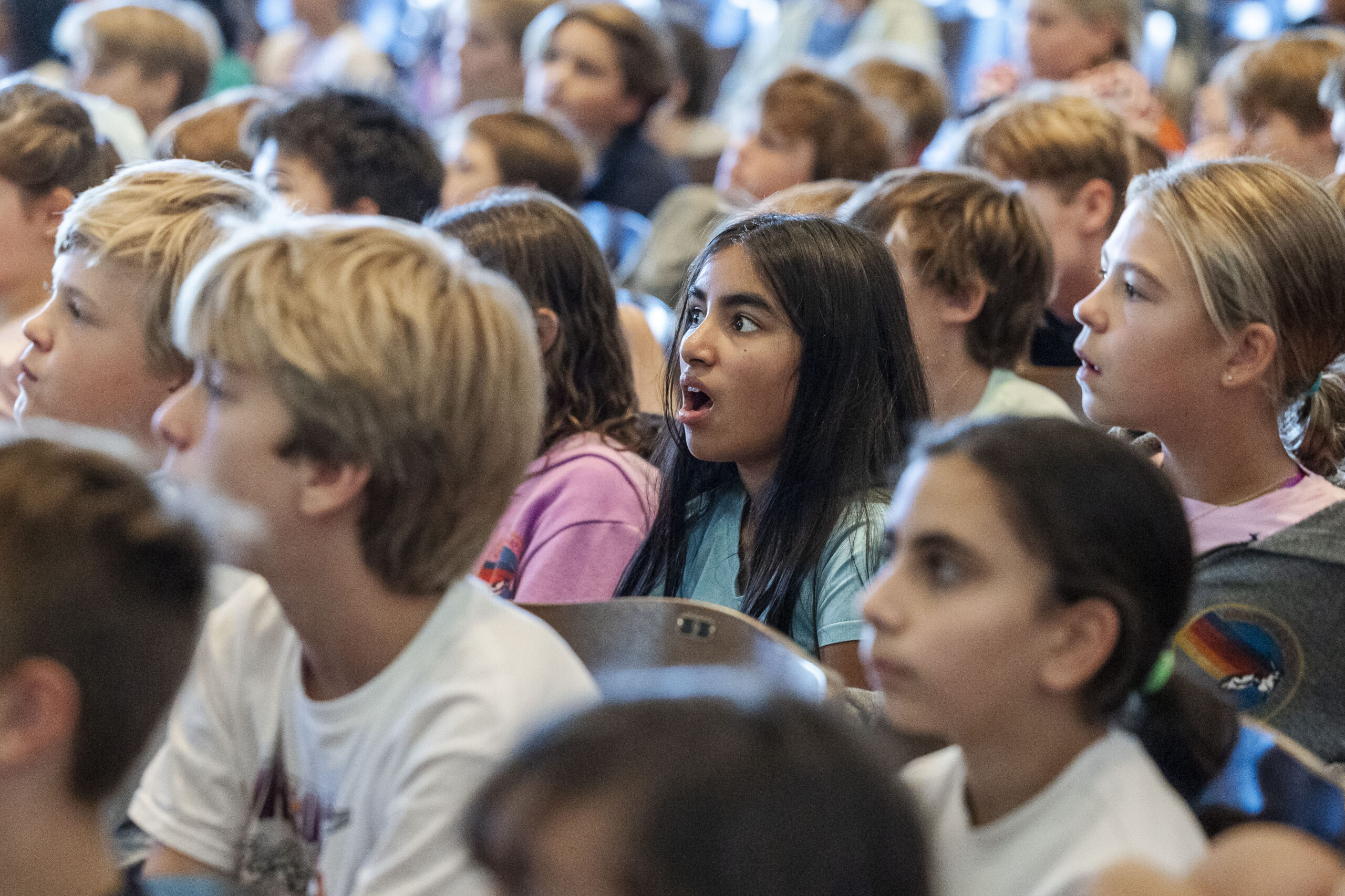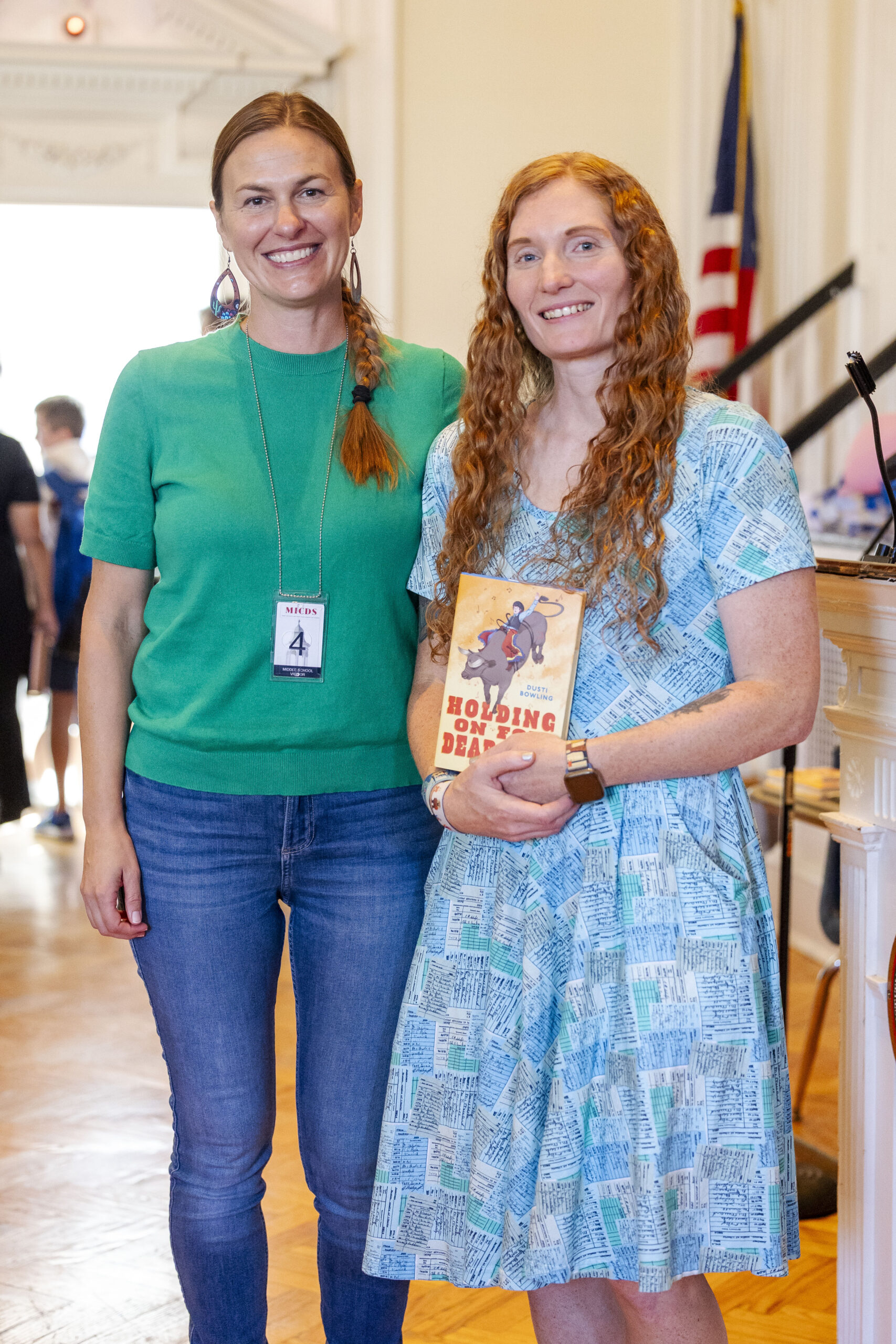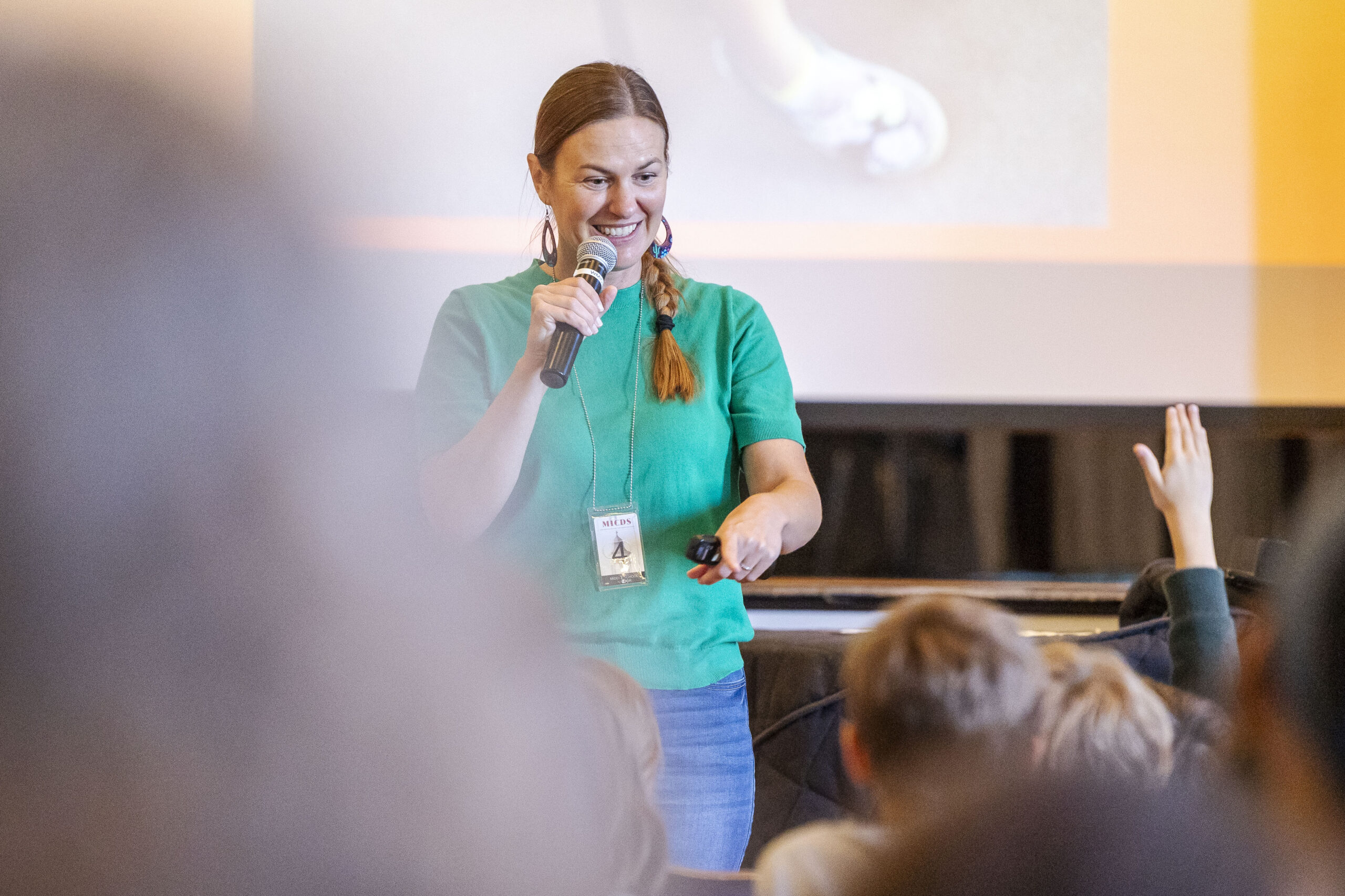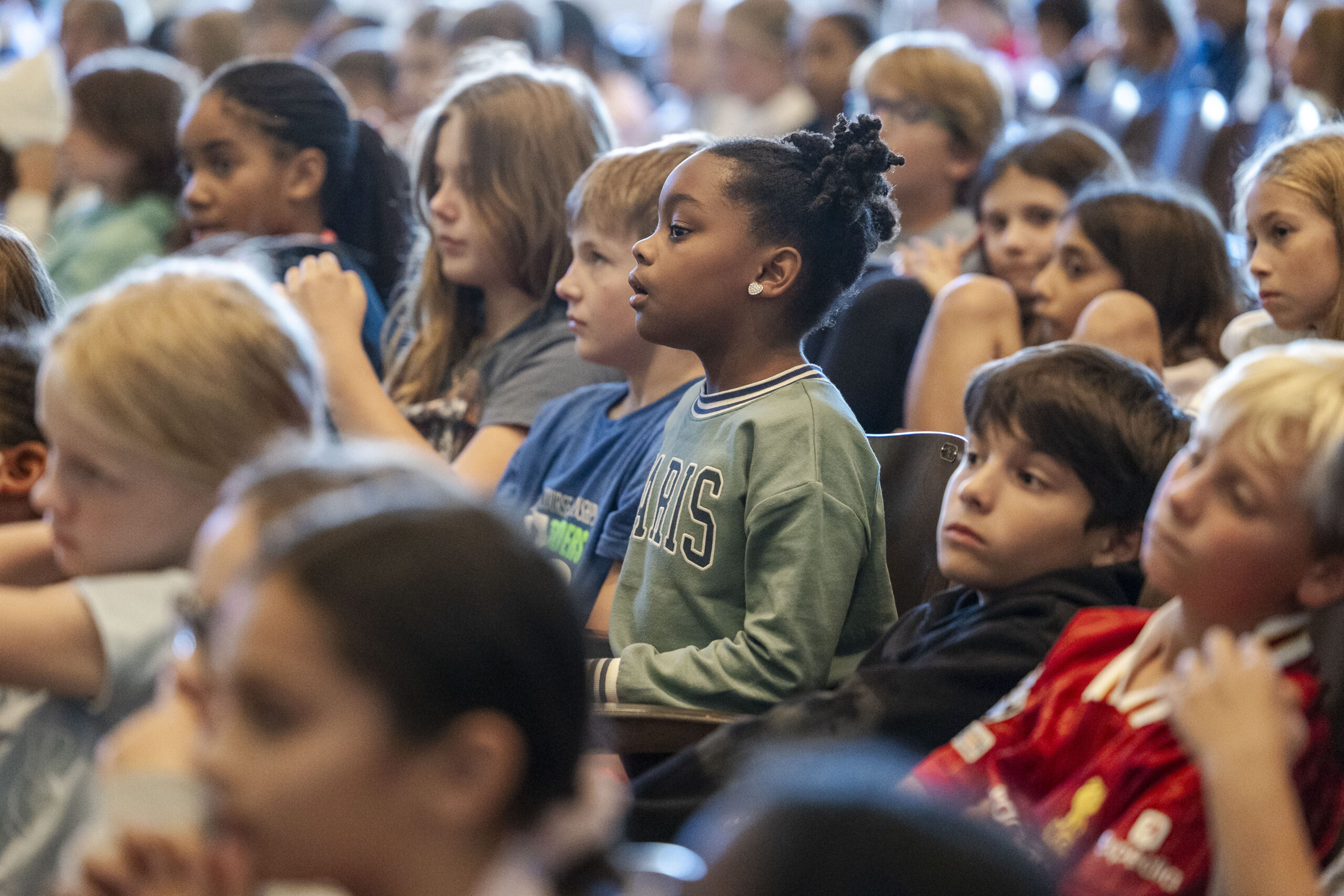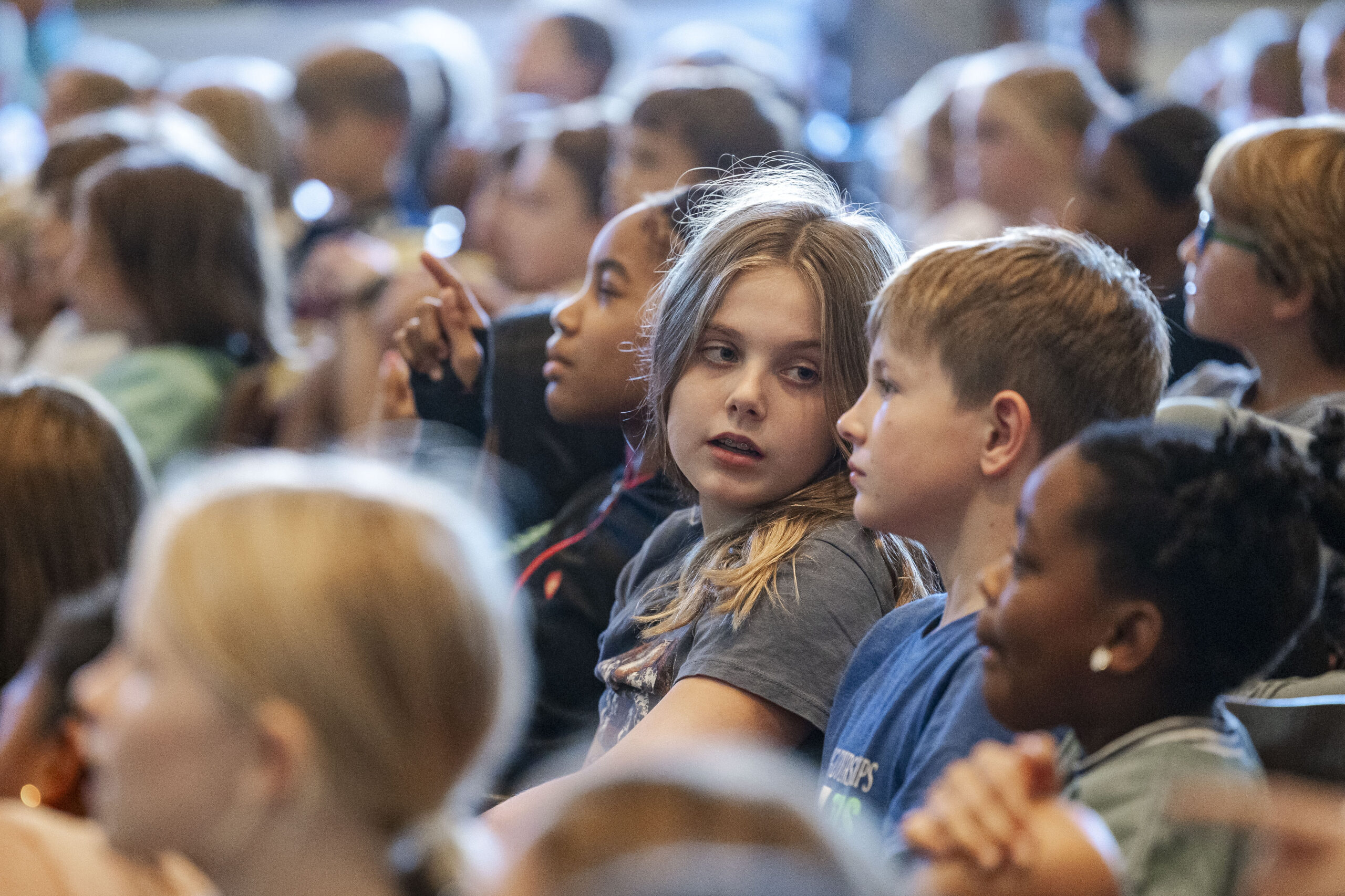What a rootin’ tootin’ joy it was to have acclaimed author Dusti Bowling saddle up with our fourth through sixth-grade students last week! Bowling is the award-winning, bestselling author of several middle-grade novels, including Insignificant Events in the Life of a Cactus, Momentous Events in the Life of a Cactus, and 24 Hours in Nowhere. Her books have won multiple awards and have been nominated for over 50 state awards.
In her latest novel, Holding on for Dear Life, Bowling tells the story of 13-year-old Canyon, a boy who loves bull riding but is facing the physical and emotional toll it takes on him. After his mother’s death, Canyon and his father bond over their shared love of the sport. However, as Canyon’s body suffers from repeated concussions, he begins to question whether his pursuit of the Junior World Bull Riding Championship is worth the pain. When he is unexpectedly chosen for a music competition show, Canyon discovers a new passion for playing the fiddle, leading him to reevaluate his priorities and what it means to truly hold on.
Middle School Librarian Bethany Kavanaugh kicked off the visit by introducing Bowling. She said, “We are so excited to welcome a very special guest to MICDS today—an author whose books are full of heart, adventure, and unforgettable characters. Dusti Bowling grew up in Arizona, surrounded by desert mountains and the saguaros (the giant cactus!), the kind of setting that shows up in many of her stories. She’s the author of some incredible books you either have already read or will read soon for summer reading. Her stories are packed with humor, bravery, friendship, and characters who remind us that being different is actually pretty amazing. When Dusti’s not writing, she loves hanging out with her family, taking care of her many pets, and reading – just like all of us book lovers here today! So, get ready to be inspired, learn something new, and maybe even think differently about what makes each of us unique.”
Bowling then took the mic and shared her story of becoming an author, which included deeply personal events from her life, her writing process, and the inspiration behind her newest novel. She shared many themes centered on family tradition, the courage to change direction, and the incredible power of reading and real-world experience.
As a child, Bowling often felt lonely, moving frequently due to her parents’ divorce. She credits reading with being her “company and refuge” during tough times, especially when she always felt like “the new kid.” This part of her childhood, along with her resilience, significantly helped shape her as a writer, although not until much later in life.
She initially viewed becoming a published author as an “impossible goal for a kid like me,” planning instead to be a veterinarian, teacher, or farmer—a career option inspired by E. B. White’s book, Charlotte’s Web. She didn’t grow up with screens like today’s children, and she didn’t even have her own computer until she was 18. As a result, she didn’t start writing until she was nearly 30. Living in the Arizona Sonoran Desert, she draws inspiration from the desert landscape and its inhabitants for many of the characters, storylines, and locations in her books. The students were bowled over by photos of the animals on her farm, including cows, chickens, cats, Nigerian dwarf goats, a dog, and even tarantulas!
Growing up, she never saw her own challenging experience of being a child of parents with substance abuse issues reflected in any book, which made her feel isolated. She decided to write stories like Across the Desert and Holding on for Dear Life to ensure that kids going through similar situations know they are not alone.
A consummate questioner of everything sparked the idea for Holding on for Dear Life, which is about bull riding. Rodeo bull riding is rooted in her family history, and the one question she consistently asked, as a woman who has never been on a bull before, was: “Why on earth would anyone ever do this?”
To answer her question, she visited the Junior Bull Riding World Finals to interview the bull riders. She was alarmed by the riders’ lack of awareness or concern regarding the severity of their injuries. She noted that bull riding has a whopping 1,440 injuries per 1,000 exposure hours, significantly higher than soccer, which has six injuries per 1,000 hours, or football, which has 18 injuries per 1,000 hours. In bull riding, to even get a score, you have to stay on the bull for eight whole seconds, a truly high-stakes test of grit, but further risking injury to the riders.
The tables turned when one of her own children sustained a scary concussion while skiing. In the hospital, a nurse calmed Bowling by sharing that the frightening symptoms her daughter was exhibiting were typical, as her own son was a frequent concussion victim. He just so happened to be a bull rider. This event sparked the book’s pivotal scene involving a concussion, lending an urgent warning to the novel’s readers. In the story, the protagonist, Canyon, must choose between the dangerous family tradition of bull riding and a newly discovered love for the fiddle, signaling that it might be time to hang up the chaps for a sheet of music. (Did you know that the fiddle is the same instrument as a violin, just played in a different style?)
Bowling offered practical advice to the students about the writing life, stressing resilience and real-world living. She told the audience to “Remember to please put down those phones, put down those screens, and get outside.” She believes screen time “lowers our creativity and lowers our attention span,” while reading does the opposite, even helping to lower anxiety. She stressed that she can’t get any new story ideas when she’s staring at her phone.
Bowling’s story ideas often come from getting outside and letting her mind wander, or simply allowing herself to feel bored. She said, “Boredom is good for us. It leads to creativity.” And she noted that she couldn’t have started writing in her late 20s as someone with no formal creative writing training, “without all the thousands of books that I had read. It turns out those books have wired me to be a writer.” She also notes that being out in nature and using your five senses to describe your environment and your experience is a key that can often unlock writing ideas, along with continually asking questions, “Why would this character do that? What would they do next?”
She read aloud from the first chapter of Holding On for Dear Life. She encouraged the students to note when they heard a sensory experience in the book, whether it be “holding on to the bull rope, looking at rows of cowboy hats and sunglasses,” or “the taste of copper in your mouth, the layer of dust on your tongue, hearing pounding hoofs, and the gasps and cheers of the crowd.”
When discussing the writing process, she remarked, “I just read one chapter from my book. So how does someone go from writing one chapter to a whole book? It involves reading, researching, asking questions, and letting the mind wander. Write about what you love! It motivates you to keep going.”
Her closing message was “revision is the most important part.” When trying to get her first book, Insignificant Events in the Life of a Cactus, published, she was rejected by literary agents a hundred times before one finally decided to rope her in. She encouraged students never to give up, reminding them that rejection doesn’t mean you’re not good, only that “We can never please everyone. But more importantly, we can always keep growing and getting better at our craft.”
Highlights from the audience Q&A include:
- Favorite Character: Her favorite character she ever created is Aven (from the Cactus books).
- Favorite Book She’s Read (but didn’t write herself): The classic middle-grade time-travel novel, When You Reach Me, by Rebecca Stead, which inspired her next middle-grade novel involving time travel and wildfires, which is due to be published in 2027.
To close, she urged students to “Take care of each other and always look upon everyone with kindness,” because “we never know what’s going on in someone else’s life or what challenges they might face at home.
Yee-haw, Dusti Bowling! Thank you for your engaging and inspiring visit!
